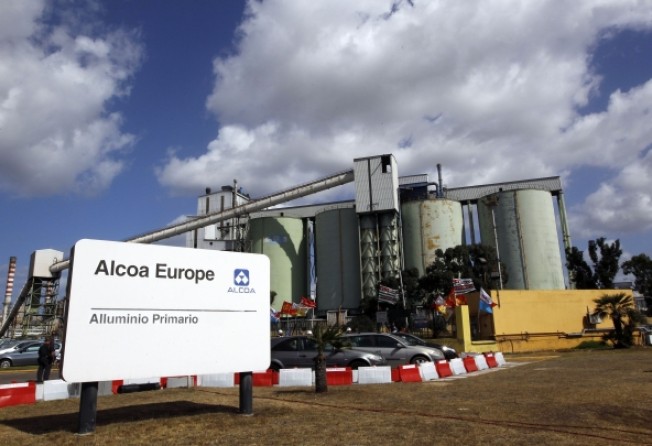Alcoa sees aluminium demand growth; markets tightening

Alcoa, the largest US aluminium producer, still sees global demand for aluminium products growing 7 per cent this year, signalling a potential price rise for the metal as bulging Chinese aluminium inventories begin to dwindle.
The solid demand, driven by the aerospace and commercial transportation sectors, should combine with industry-wide production cuts already in place to reduce a supply glut that has driven down aluminium prices by 13 per cent this year.
Alcoa on Monday affirmed its demand forecast, even as it posted a net loss in the second quarter, due to restructuring costs related to plant closures.
On an adjusted basis, it achieved a larger-than-expected profit thanks to productivity gains and a strong performance from its engineered products business, which makes high-margin goods like aerospace fasteners, turbine blades and truck wheels.
“It was a good, solid quarter. Alcoa continues to show they can cut costs and will be a survivor,” said Tim Ghriskey, chief investment officer of Solaris Asset Management, which owns some Alcoa bonds. “This is a company that remains profitable and strong despite the tough environment.”
Shares of Alcoa, which closed at US$7.92 on the New York Stock Exchange shortly after the results, were little changed in trading after the closing bell.
The stock has fallen nearly 9 per cent this year in the face of stubbornly low aluminium prices, caused by a global surplus, and concerns about lackluster demand.
Alcoa expects a 9 to 10 per cent increase in aluminium demand this year from the aerospace sector, driven by a recent flurry of aircraft orders at the Paris Air Show and an already-large backlog of orders within the aerospace industry. It also sees increased demand from the automotive, commercial transportation and construction industries.
But while Chinese stocks have fallen, stockpiles in London Metals Exchange-registered facilities rose to a record-high above 5.45 million tonnes at the end of June. This means that aluminium prices are not likely to stage a major rally anytime soon despite industry-wide production cuts.
Alcoa reported a loss from its aluminium smelting business, and said roughly a third of global aluminium is still produced at a loss, despite offsets from record high premiums above LME-prices, which end-buyers pay to take delivery of the metal.
“The primary (business) lost money in the quarter and that is symptomatic of the industry as a whole,” Alcoa Chief Financial Officer William Oplinger told a conference call.
The London three-month aluminium price fell nearly 7 per cent during the quarter ended June 30 and has tumbled around 13 per cent this year. Aluminum touched a nearly four-year low late last month of US$1,758 a tonne.
Given the plight of the aluminium industry, Alcoa’s results are no longer viewed as a proxy for economic growth, but its quarterly results are still closely watched as they mark the unofficial start of the North American earnings season.
A component of the Dow Jones Industrial Average for more than 50 years, Alcoa is now by far the smallest company in the index. Its stock price has fallen more than 10 per cent over the last 12 months, while the Dow has risen roughly 18 per cent.
QUARTERLY RESULTS
Excluding the impact of restructuring costs and costs tied to a racketeering and fraud probe, the company reported second-quarter earnings of US$76 million, or 7 cents a share. Analysts had been expecting earnings of 6 cents, according to Thomson Reuters I/B/E/S.
Quarterly revenue fell 2 per cent to US$5.85 billion, largely because of lower aluminium prices, but still topped analysts’ expectations of US$5.83 billion.
“It looks much better than expected. It is good to see that revenue is better than expected,” said Alan Lancz, president of Alan B. Lancz & Associates, an investment advisory firm based in Toledo, Ohio. “It seems like the outlook is favourable so far.”
The company said its net loss in the quarter ended June 30 was US$119 million, or 11 cents per share. That compares with a loss of US$2 million, or break-even per share, a year earlier.